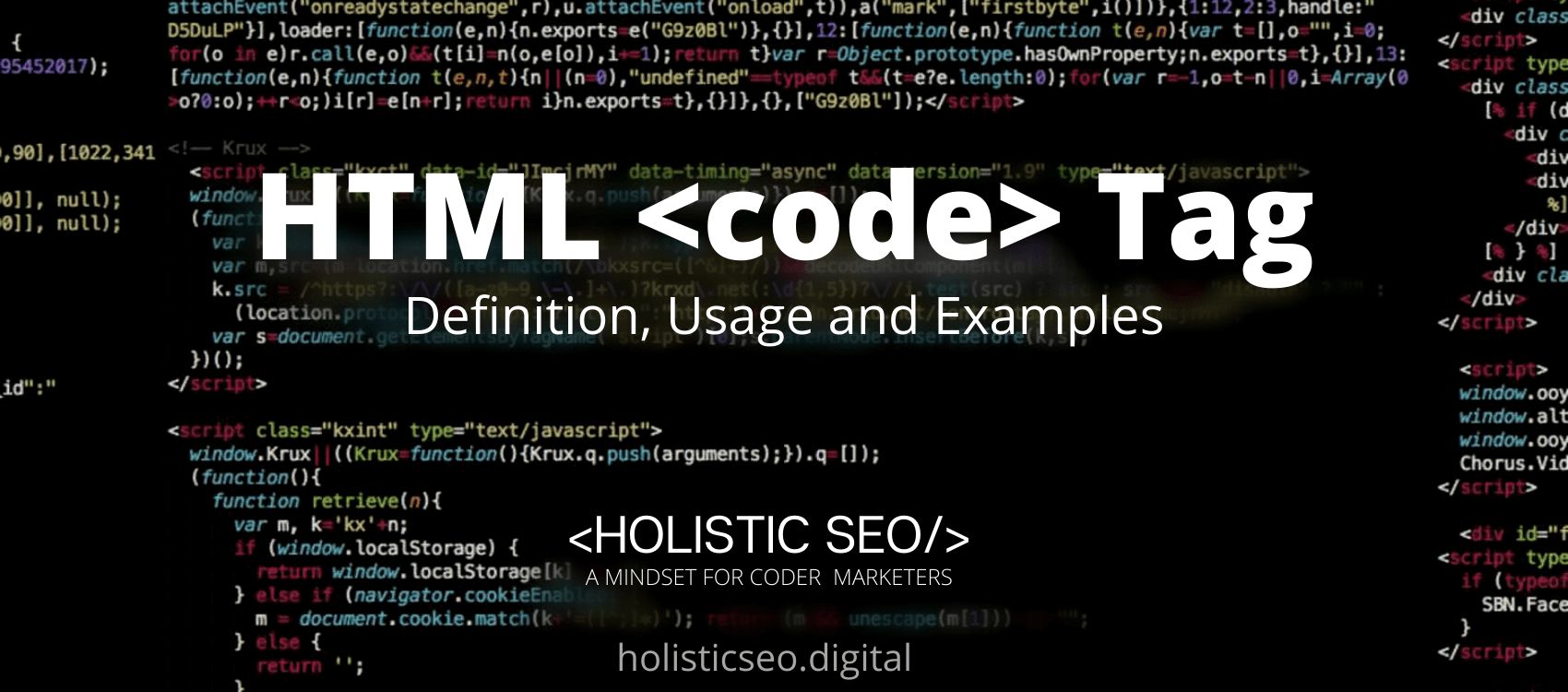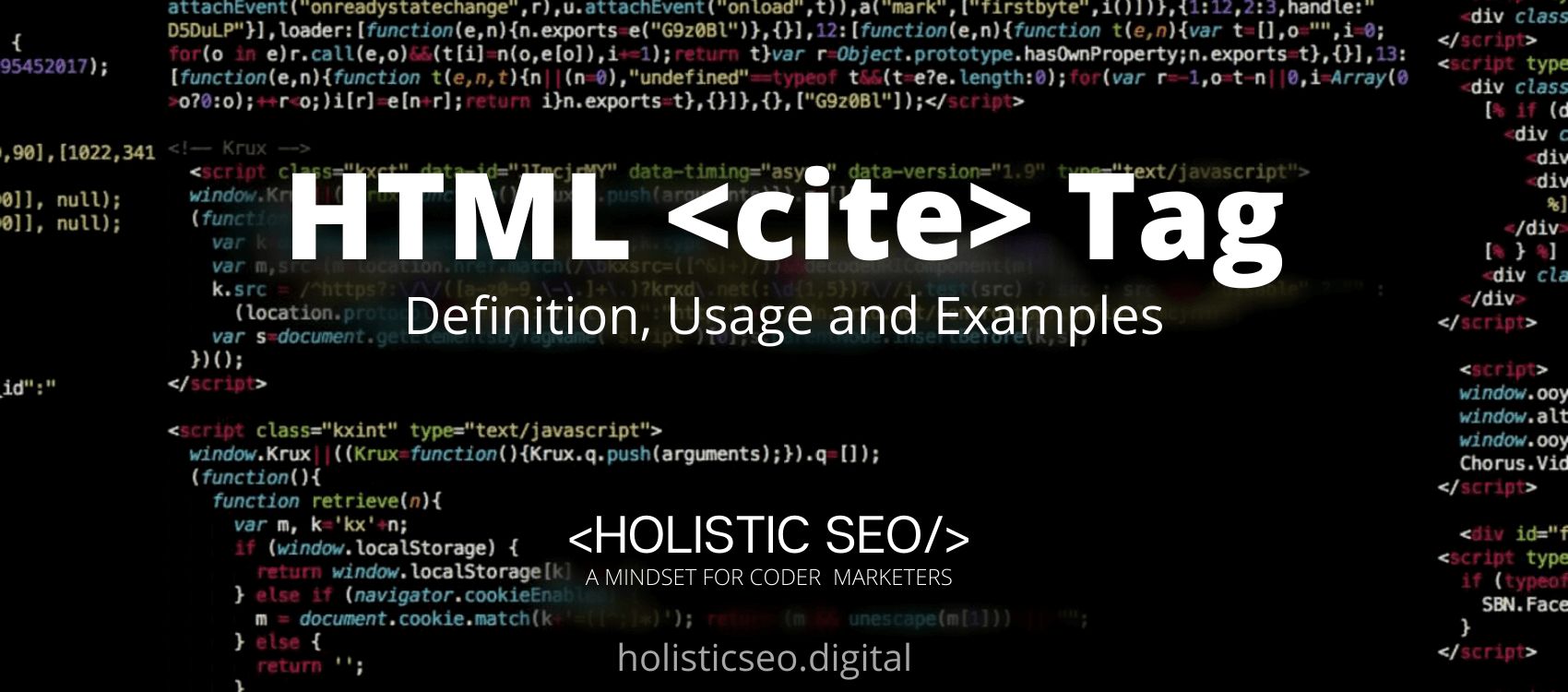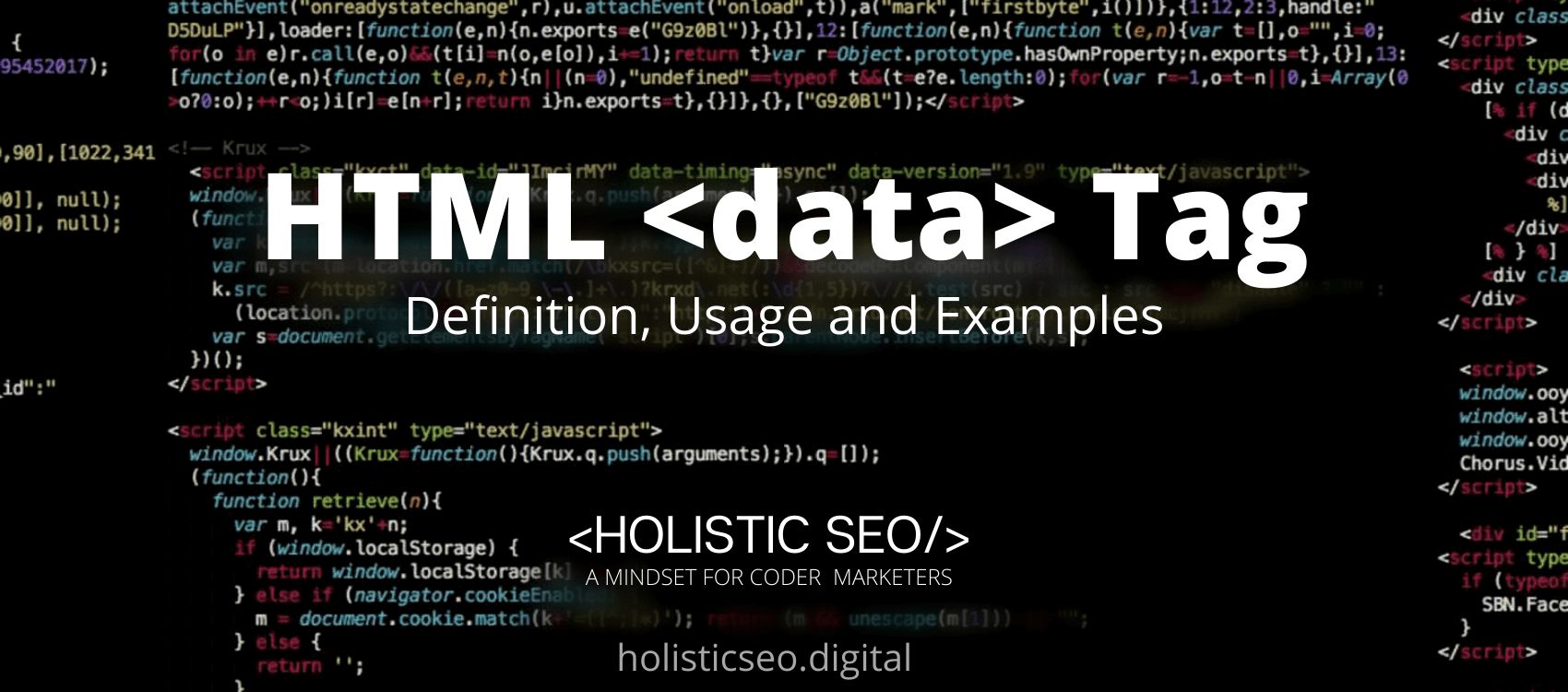The HTML <code> tag defines a section of computer code. The code fragment could be the name of an XML element, a file, a computer program, or any other text recognized by a computer. Browsers typically render code in a monospace typeface (also known as a fixed-width or non-proportional font), such as Courier (unless style sheets have been used to specify a different font). The <code> HTML Tag is part of Formatting HTML category in HTML Element Reference. The attributes of the <code> HTML Tag are global attributes, and event attributes.
<code> code block example to learn how it works is given below.
<code>Computer code here...</code>The second example usage of the “<code>” code block example is below.
<blockquote>
<p>The Internet <code>DateFormat()</code> function formats the date passed in as a parameter.</p>What is <code> HTML Tag?
The <code> HTML Tag specify a section of computer code. The material contained within is rendered in the browser’s default monospace typeface.
How to Use <code> HTML Tag?
To use the <code> HTML Tag the web developer should insert the text between the start and end tags. This tag will render the content in monospace, as well as in a fixed-width or non-proportional typeface.
Example Usage of <code> HTML Tag?
The following example of usage of <code> HTML tag is given below.
<p>Oh <code>Betty</code> I won't make assumptions
About why you switched your homeroom but
I think it's 'cause of me.</p>What are the Attributes of <code> HTML Tag?
There are multiple attributes for the <code> HTML Tag. The following attributes are listed below.
- Global Attributes: The <code> HTML Tag supports global attributes. All HTML elements, even those not specified in the standard, can have global attributes. This means that any non-standard elements must nevertheless allow certain characteristics, even if using such elements makes the content non-HTML5 compliant.
- Event Attributes: The <code> HTML Tag supports event attributes. The Event Attributes always have a name that begins with “on” and is followed by the name of the event for which it is intended. They specify a script to run when an event of the defined type is dispatched to the element with the specified attributes.
What is the Default CSS Setting for <code> HTML Tag?
The following is the Default CSS Setting for the <code> HTML Tag.
code {
background-color: #eee;
border-radius: 3px;
font-family: courier, monospace;
padding: 0 3px;
}What are the Related other HTML Tags to <code>?
The other related HTML Tags to the <code> HTML Tag are listed below.
- <del> HTML Tag: The <del> HTML Tag is related to <code> HTML Tag because they are both in formatting HTML Tags. The <del> HTML Tag specifies the text that has been deleted from the document.
- <dfn> HTML Tag: The <dfn> HTML Tag is related to <code> HTML Tag because they are both in formatting HTML Tags. The <dfn> HTML Tag is used to define a term’s defining instance.
- <address> HTML Tag: The <address> HTML Tag is related to <code> HTML Tag because they are both in formatting HTML Tags. The <address> HTML Tag is used to specify the author of a website or document’s contact information.
- <bdi> HTML Tag: The <bdi> HTML Tag is related to <code> HTML Tag because they are both in formatting HTML Tags. The <bdi> HTML Tag is used to create text that is written in a different direction than the rest of the text.
- <center> HTML Tag: The <center> HTML Tag is related to <code> HTML Tag because they are both in formatting HTML Tags. To centralize the text in HTML, the <center> HTML Tag is used.
- 48 Online Shopping and Consumer Behavior Statistics, Facts and Trends - August 22, 2023
- B2B Marketing Statistics - August 22, 2023
- 38 Podcast Statistics, Facts, and Trends - August 22, 2023


